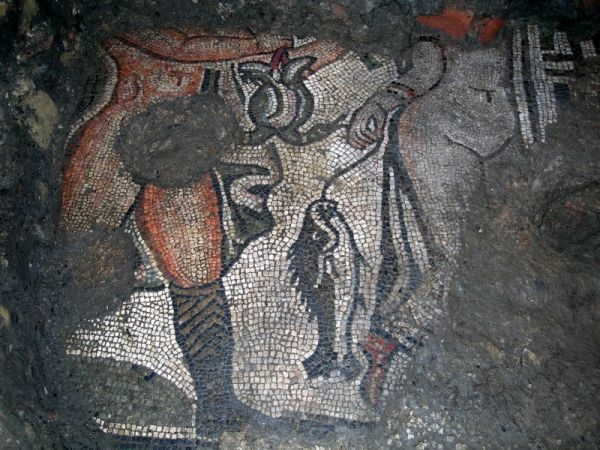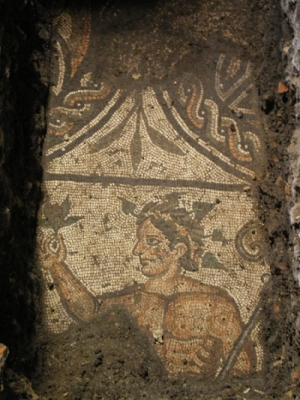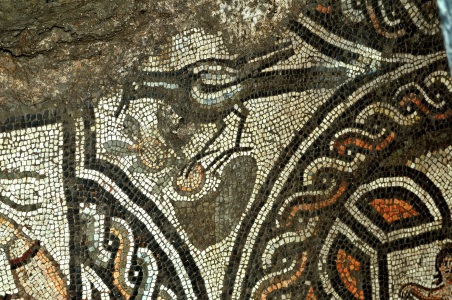A Roman mosaic floor filled with scenes depicting pagan
rites and oriental gods has emerged from the ground of a Catholic church in
Italy, archaeologists announced.
The mosaic pavement, which measures 13 square meters (140 square feet) and dates
to the fourth century A.D., was unearthed at a depth of about 4 meters (13 feet)
below the the ground's surface during archaeological investigations in the crypt
of the Cathedral of Reggio Emilia, in central-northern Italy.
"The size and design of the mosaic pavement suggest that it formed the floor of
a huge room. We believe this was the residence of a wealthy Roman," Renata
Curina, the archaeologist in charge of the dig, told Discovery News.

The fact that depictions of pagan gods had lain for hundreds of years just a
few meters under the cathedral doesn't come too much as a surprise, according to
the archaeologist.
"The church was built on top of pre-existing building structures. This is rather
normal in Reggio Emilia. We can see that little care was taken of the mosaic
floor, since pillars are built on top of it," Curina said.
Made up of small tesserae -- tiny tiles -- of different materials, which include
colored stones, glass cameos and golden leaves, the intricate mosaic floor
features geometric designs of circles and squares with little figures of
dancers, flowers and birds such as magpies and peacocks.
|
|
|
What makes the mosaic unique, however, are three large mythological scenes.
"So far all scenes show naked figures. We are still trying to figure out their
meaning. I believe that more clues might come to light as we continue to dig,"
Curina said.

The scenes are rather unusual. One shows a naked man falling into someone's
arms, another displays two naked figures -- a man and a woman -- wearing jewels.
The woman holds a just caught fish, while the man holds two live ducks.
 Another
extraordinary scene shows a naked man wearing an ivy crown and holding a lotus
flower in his right hand.
Another
extraordinary scene shows a naked man wearing an ivy crown and holding a lotus
flower in his right hand.
In his left hand, the mysterious character holds a lituus. This is a crooked
cane which in ancient Rome was used by the augurs as a cult instrument. The cane
was regarded as a symbol of a priestly group.
The augurs were religious officials who observed natural signs, such as the
flight of birds, in order to interpret them as indications of divine approval or
disapproval.
"Symbols such as the lotus flower and the ivy crown might hint that this was a
private room dedicated to the cult of oriental gods," Curina said.
According to Luigi Malnati, superintendent of archaeological heritage in
Emilia Romagna, such pagan scenes must have been pieced together before 380
A.D., the year when the emperor Theodosius proclaimed Christianity the state
religion. Indeed, a series of decrees in 391-392 A.D. banned and punished pagan
cult practices within the empire.
"This is one of the most important and interesting mosaics in northern Italy. It
stands out for its size, design and refined technique," Malnati said.
Roger Ling, a professor of classical art and archaeology at the University of
Manchester, U.K., and the author of "Ancient Mosaics," agreed. "It's a
sensational discovery," Ling told Discovery News.
Once fully detached and restored, the mosaic will be put on display at a local
museum.

